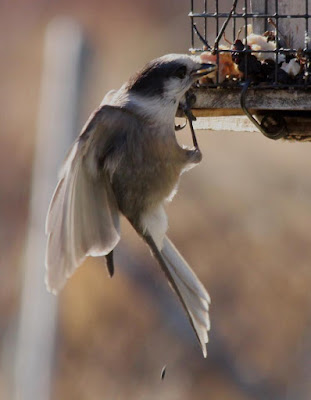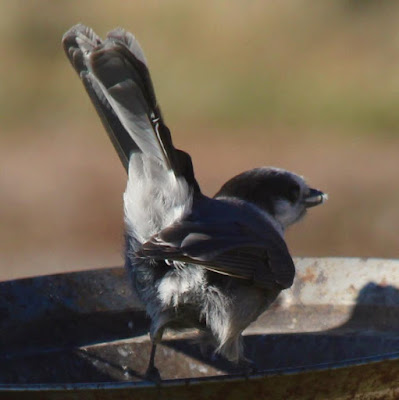It's a beautiful sunny day today on the Chilcotin Plateau.
We've been seeing the tracks and resting places of our resident winter moose
for a few weeks now without catching sight of her, until this morning.

David got some great video of her which I hope he'll post
on Facebook in the next day or two. She appears healthy and relaxed. She may have been
born here.
We have been enjoying our resident winter birds as
well. The chickadees and pine siskins, our three gray jays, the
solitary blue jay we call Sammy, as well as those majestic predator birds like the shrike and the Northern Hawk Owl. We have all the
regular winter critters; squirrels and rabbits
and weasels and coyotes, and foxes. For 16 years now we've witnessed and photographed our birds and wildlife through every season. It's been an incredible experience to see them return and depart, to see the increase or decrease in their numbers each year. And while we provide safe sanctuary for all our birds and wildlife; this is a tiny corner of their world. We are always sad to see them move on and wish them godspeed on their journeys.
We have at least two more months of winter here in the Chilcotin Forest, but on a sunny winter's day like today, spring whispers in our ears teasing us into thinking it must be just around the corner.
Here are some pics from our walkabout this morning
Life is good. We count our blessings every day!
We are enjoying the pristine beauty of winter (how could we not), and we look forward to Spring, trying not to wish this quiet season away.






























